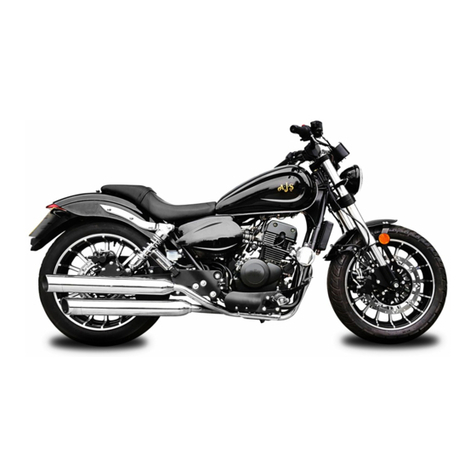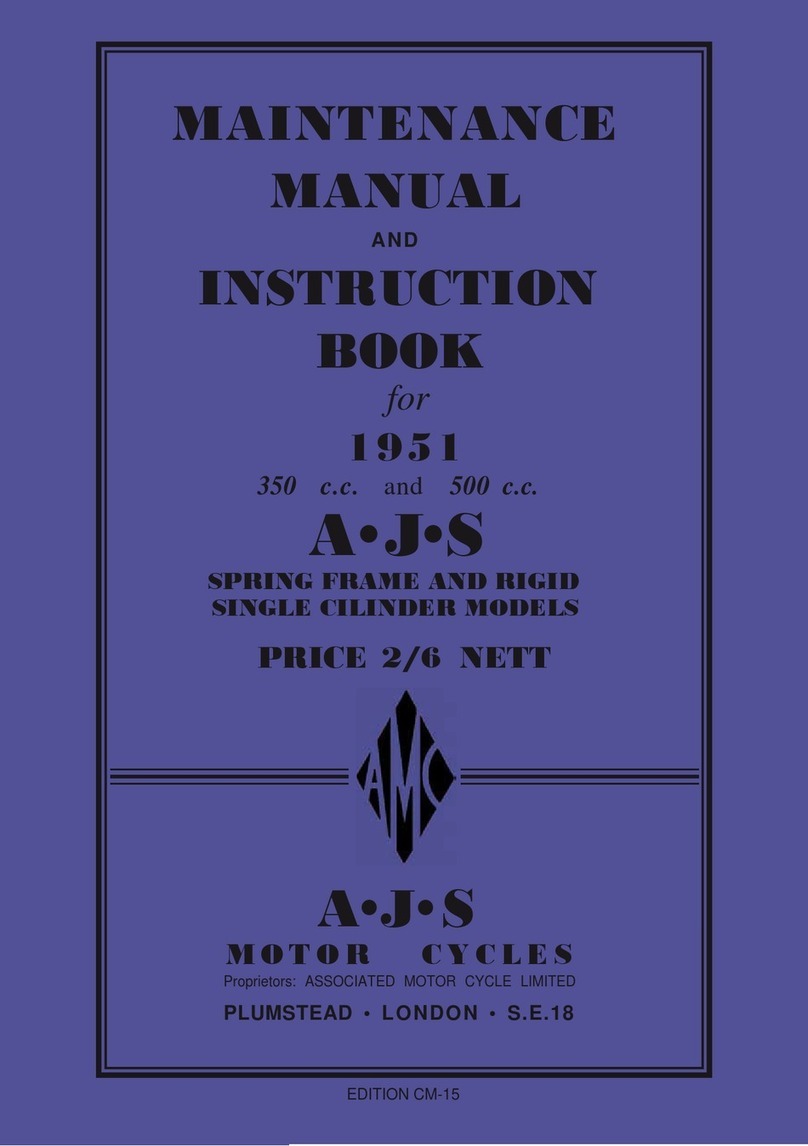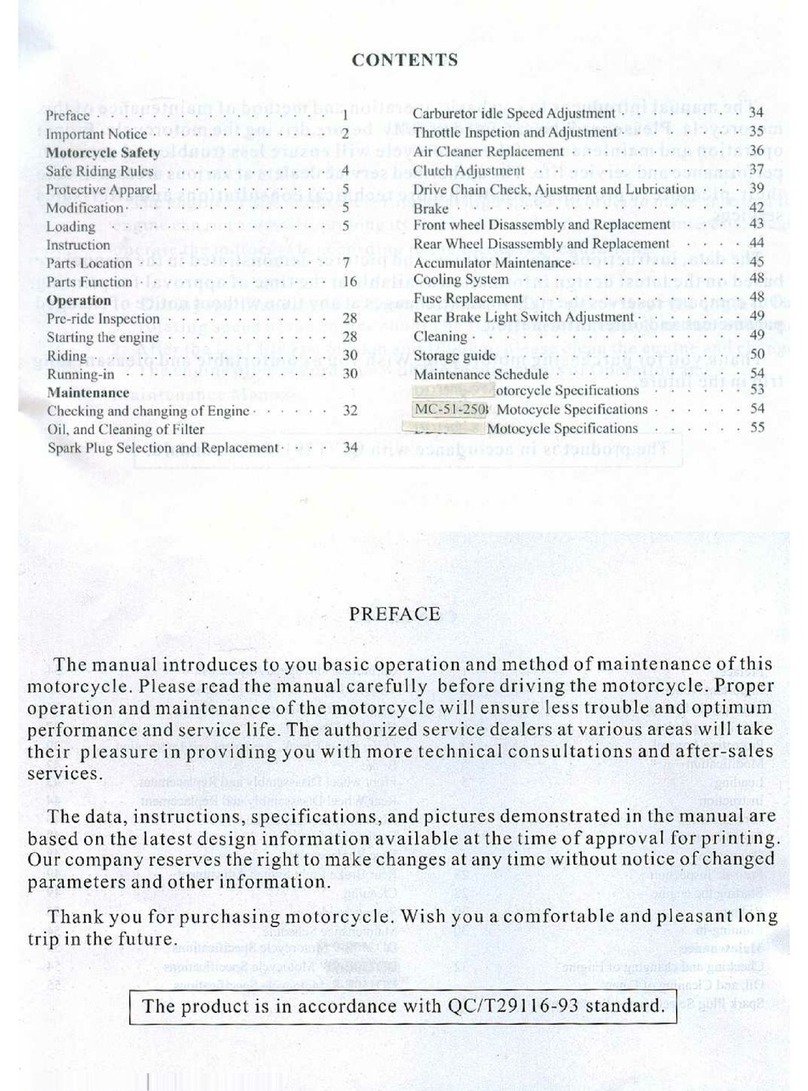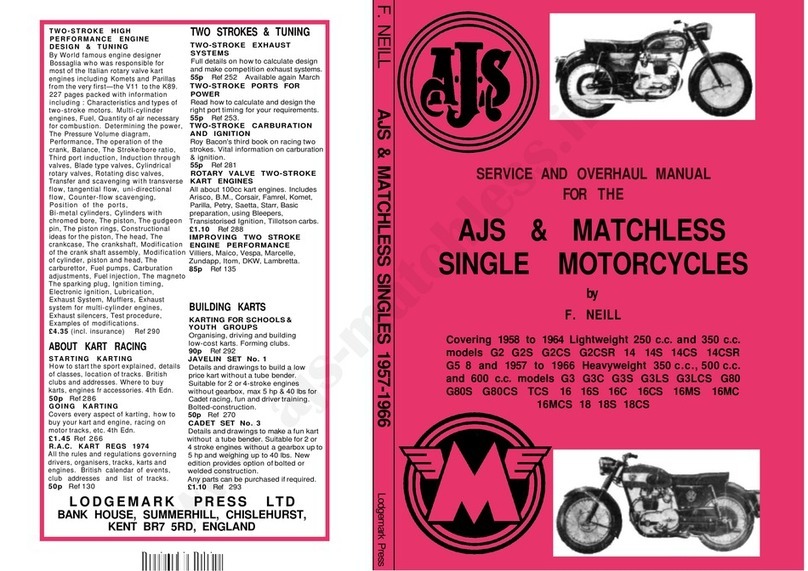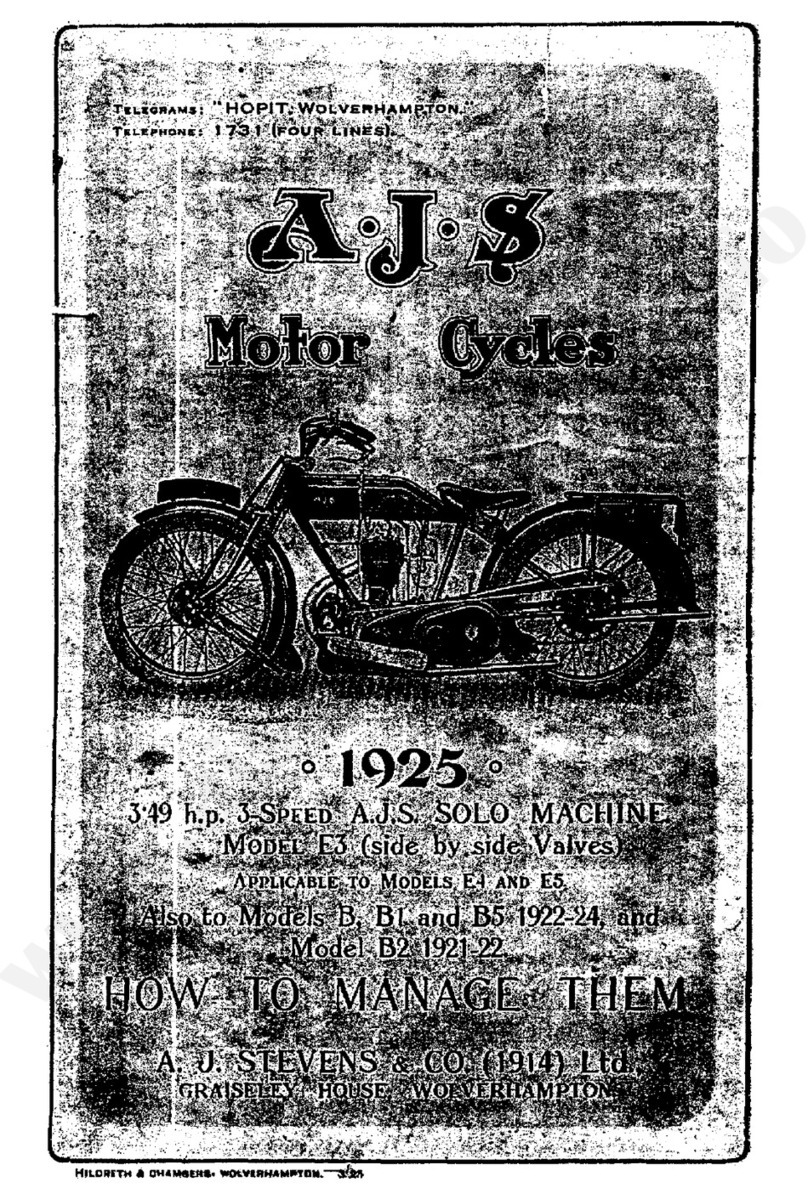CONTROLS
(1)
(2)
(3)
(4)
(5)
(6)
(7)
(8)
(9)
(10)
(11)
(12)
(13)
(14)
(15)
(16)
(17)
Throttle twist grip. On right handlebar. Twist Inwards to open. When
fully closed engine should just idle when hot.
Air lever. Small lever on right handlebar Pull Inwards to Increase air supply
to carburetter. Once set, when engine has warmed up, requires no alteration
for different road speeds. Should be fully closed when starting engine from cold,
Ignition lever. When fitted. Small lever on left handlebar. Advances and
retards ignition point. Pull Inwards to retard. Retard two-fifths of total
movement for starting.
Valve lifter lever. Small lever close to clutch lever. Lifts exhaust valve from
seat, releasing compression In combustion chamber, enabling engine to be easily
rotated for starting. Also used for stopping engine if throttle stop is set as
advised above.
Clutch lever. Large lever on left handlebar. Grip to release clutch so that
drive to rear wheel is disconnected.
Front brake lever. Large lever on right handlebar. Grip to operate front
wheel brake and, for normal braking, use in conjunction with rear brake application.
Rear brake lever. Pedal close to left side foot rest. Depress with left foot to
apply rear brake. Apply gently and use increasing pressure as the road speed
decreases.
Gear change lever. Pedal in horizontal position close to right foot rest. Con-
trols selection of the four speeds, or ratios, between engine and rear wheel
revolutions, with a " free," or neutral, position. See Illustration 2.
Kick-starter lever. Vertical pedal on right hand side of gear box.
Lighting switch, in top of head lamp. Controls lamps by a rotating lever which
has three positions :
(1) " O F F " Lamps not on.
(2) " L " Pilot lamps, rear lamp and speedometer lamp on.
(3) " H " Main head lamp, rear lamp and speedometer lamp on.
Ammeter. In top of head lamp. Indicates flow of electric current, in, or out,
of battery. (" Charge " or " Discharge.")
Horn switch. Press switch on right handlebar.
Gear box filler cap. Located on top edge of kick-starter case cover. Allows
Insertion of lubricant and access to clutch inner wire and internal clutch operating
lever.
Footrest for rider.
Petrol tank filler cap. Located in top of fuel tank. To release, slightly depress,
turn fully to the left, and then lift away. There are two locking positions. The
middle position, between the fully tightened down and " lift away " positions,
is in the nature of a " safety " device to prevent toss that might be occasioned by
unauthorised meddling.
Oil tank filler cap. Located on top edge of oil tank. The construction and
operation is exactly as the petrol tank filler cap.
Dipping switch. Trigger switch on left handlebar. Used to select normal or
" dipped " beam of head lamp when main lighting switch lever is in the " H "
position. (The main head lamp bulb has two filaments.)
C—A.S.
7






